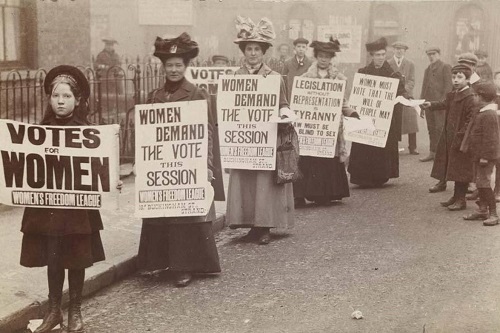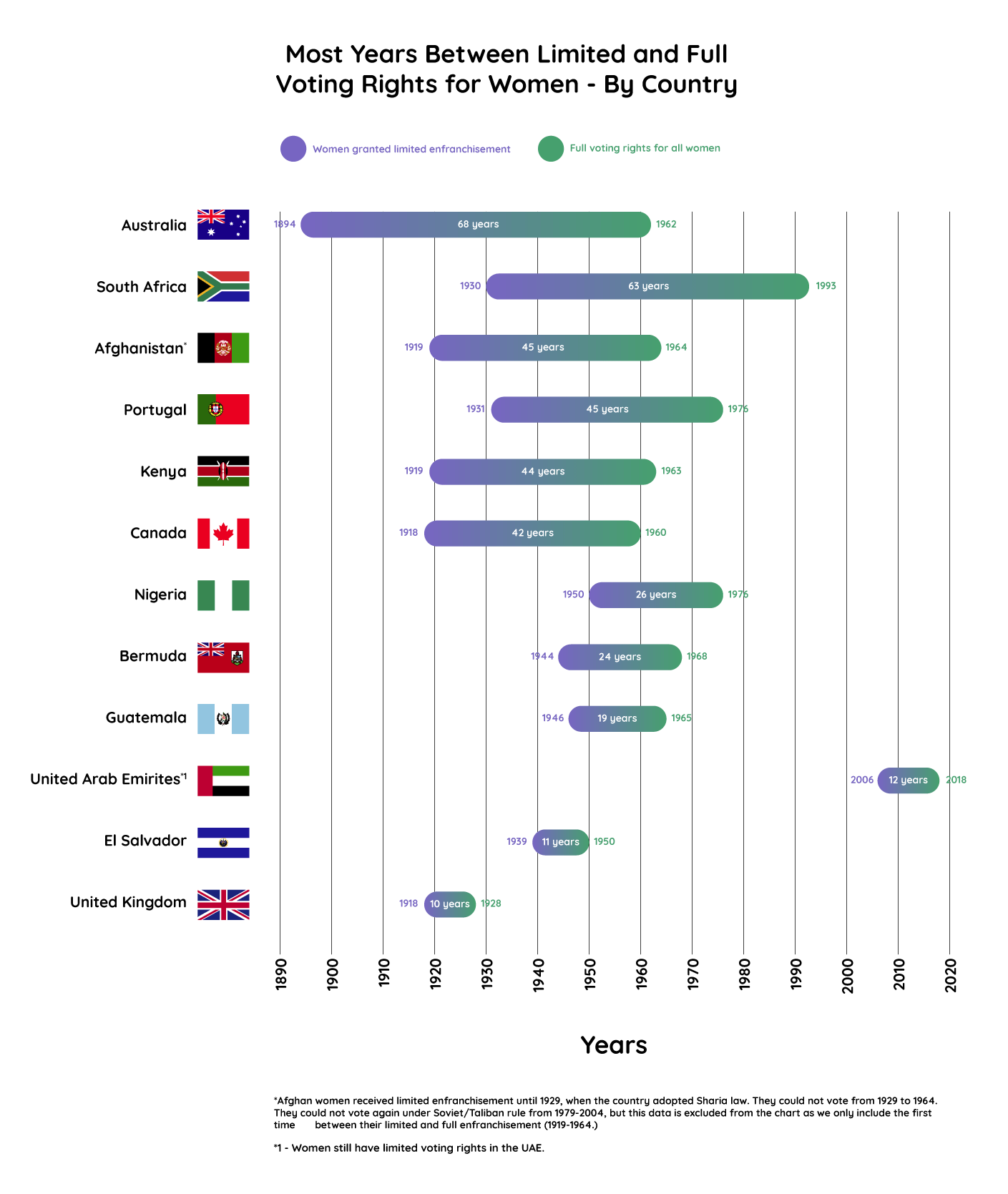MoL photo
100 years of Women’s Suffrage
On December 14th 1918, 100 years ago, women in Britain first cast their votes in a general election. After decades of campaigning and protesting for women’s rights, women were finally allowed the suffrage they sought.
The team at Historic Newspapers have put together this interactive timeline of women’s suffrage to commemorate the efforts women have made all over the world in the fight for equality. The graph depicts the year in which every country around the world gave women the full vote, to differentiate from the limited suffrage that was often given first. The graph also shows countries which no longer exist, such as North and South Yemen.
It is important to realise that although we are celebrating 100 years of women’s suffrage in Britain, this didn’t include all women. Initially, it included only women who were over 30, and met certain property regulations. Although this enfranchised a lot of women, it was by no means in equal measure to men. It would be another 10 years before women were awarded the full vote in 1928.
Throughout the world these surprising cases of enfranchisement disparity can be found. The data below highlights this, and points to other factors which enforced inequalities, such as race, class, and financial status.
Today, Vatican City and the United Arab Emirates are the only countries where women aren’t able to vote.
Australia (68 years): Though Australia was technically the second country to award women the vote after New Zealand in 1894, this was restricted to colonials; aboriginal peoples were not allowed to vote until 1962.
South Africa (63 years): Voting was limited to white women on the same basis as white men. Coloured people were not given voting rights until 1984, while Africans had to wait until the fall of Apartheid in 1994.
Afghanistan (45 years): After gaining independence from Britain, women had limited enfranchisement until 1929, but when the country adopted Sharia law, they could no longer vote at all.
Portugal (45 years): The restrictions on voting were based on a woman’s level of education, and were lifted after the revolution in 1974.
Kenya (44 years): In 1919 European women living in Kenya were given the right to vote. In 1956 these rights were extended to African men and women with a certain level of education or property ownership. In 1963 everyone could vote regardless of race.
Canada (42 years): Voting rights were limited to women over 21, “not alien-born”, and who met provincially determined property qualifications. By 1920 Canadian women (excluding aboriginal) could vote. In 1960 First Nation people were granted the right to vote.
Nigeria (26 years): In 1950, women in the south were partially enfranchised, whereas women in the north (who were predominantly Muslim) weren’t allowed to vote at all until the country gave full enfranchisement in 1976.
Bermuda (24 years): Voting rights were limited to property holding women.
Guatemala (19 years): Only literate women were granted voting rights.
United Arab Emirates (12 years): Still limited suffrage for women and men, the rulers of the seven Emirates each select a proportion of voters for the Federal National Council (FNC) that together account for about 12% of Emirati citizens.
El Salvador (11 years): Voting rights were restricted in regards to literacy level.
United Kingdom (10 years): Voting rights were limited to women over 30, compared to 21 for men and 19 for those who had fought in World War One. Additionally, various property restrictions remained in place (see The Representation of the People Act 1918).
Source: https://en.wikipedia.org/wiki/Women%27s_suffrage

Historic Newspapers
Historic Newspapers is the world’s largest private archive housing over four million old newspapers. It is an unmatched collection, growing every day. The archive is created primarily from UK newspapers, both national and regional titles. Spanning the last four centuries, anyone can buy old newspapers and gift them to those fascinated by history.


